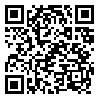Volume 79, Issue 12 (March 2022)
Tehran Univ Med J 2022, 79(12): 934-942 |
Back to browse issues page
Download citation:
BibTeX | RIS | EndNote | Medlars | ProCite | Reference Manager | RefWorks
Send citation to:



BibTeX | RIS | EndNote | Medlars | ProCite | Reference Manager | RefWorks
Send citation to:
Shalbaf A, Amini N, Choubdar H, Mahdavi M, Abedini A, Lashgari R. Early prediction of COVID-19 mortality risk based on
demographic, vital sign and blood test. Tehran Univ Med J 2022; 79 (12) :934-942
URL: http://tumj.tums.ac.ir/article-1-11580-en.html
URL: http://tumj.tums.ac.ir/article-1-11580-en.html
Ahmad Shalbaf * 
 1, Nasrin Amini1
1, Nasrin Amini1 
 , Hadi Choubdar2
, Hadi Choubdar2 
 , Mahdi Mahdavi2
, Mahdi Mahdavi2 
 , Atefeh Abedini3
, Atefeh Abedini3 
 , Reza Lashgari2
, Reza Lashgari2 


 1, Nasrin Amini1
1, Nasrin Amini1 
 , Hadi Choubdar2
, Hadi Choubdar2 
 , Mahdi Mahdavi2
, Mahdi Mahdavi2 
 , Atefeh Abedini3
, Atefeh Abedini3 
 , Reza Lashgari2
, Reza Lashgari2 

1- Department of Biomedical Engineering and Medical Physics, School of Medicine, Shahid Beheshti University of Medical Sciences, Tehran, Iran.
2- Institute of Medical Science and Technology (IMSAT), Shahid Beheshti University, Tehran, Iran.
3- Chronic Respiratory Diseases Research Center, National Research Institute of Tuberculosis and Lung Diseases (NRITLD), Shahid Beheshti University of Medical Sciences, Tehran, Iran.
2- Institute of Medical Science and Technology (IMSAT), Shahid Beheshti University, Tehran, Iran.
3- Chronic Respiratory Diseases Research Center, National Research Institute of Tuberculosis and Lung Diseases (NRITLD), Shahid Beheshti University of Medical Sciences, Tehran, Iran.
Abstract: (2186 Views)
Background: Early prediction of the outcome situation of COVID-19 patients can decrease mortality risk by assuring efficient resource allocation and treatment planning. This study introduces a very accurate and fast system for the prediction of COVID-19 outcomes using demographic, vital signs, and laboratory blood test data.
Methods: In this analytic study, which is done from May 2020 to June 2021 in Tehran, 41 features of 244 COVID-19 patients were recorded on the first day of admission to the Masih Daneshvari Hospital. These features were categorized into eight different groups, demographic and patient history features, vital signs, and six different groups of laboratory blood tests including complete blood count (CBC), coagulation, kidney, liver, blood gas, and general. In this study, first, the significance of each of the extracted features and then the eight groups of features for prediction of mortality outcomes were considered, separately. Finally, the best combination of different groups of features was assessed. The statistical methods including the area under the receiver operating characteristic curve (AUC-ROC) based on binary Logistic Regression classification algorithm were used for evaluation.
Methods: In this analytic study, which is done from May 2020 to June 2021 in Tehran, 41 features of 244 COVID-19 patients were recorded on the first day of admission to the Masih Daneshvari Hospital. These features were categorized into eight different groups, demographic and patient history features, vital signs, and six different groups of laboratory blood tests including complete blood count (CBC), coagulation, kidney, liver, blood gas, and general. In this study, first, the significance of each of the extracted features and then the eight groups of features for prediction of mortality outcomes were considered, separately. Finally, the best combination of different groups of features was assessed. The statistical methods including the area under the receiver operating characteristic curve (AUC-ROC) based on binary Logistic Regression classification algorithm were used for evaluation.
|
Results: The results revealed that red cell distribution width (RDW), mean corpuscular hemoglobin (MCH), mean corpuscular hemoglobin concentration (MCHC), and mean corpuscular volume (MCV) in CBC features have the highest AUC with values of 85.29, 80.96, 79.94 and 79.70, respectively. Then, blood oxygen saturation level (SPO2) in vital features has a higher AUC with a value of 79.28. Moreover, combinations of features in the CBC group have the highest AUC with a value of 95.57. Then, coagulation and vital signs groups have the highest AUC with values of 85.20 and 83.84, respectively. Finally, triple combinations of features in CBC, vital signs, and coagulation groups have the highest AUC with the value of 96.54.
Conclusion: Our proposed system can be used as an assistant acceptable tool for triage of COVID-19 patients to determine which patient will have a higher risk for hospitalization and intensive care in medical environments. |
Type of Study: Original Article |
| Rights and permissions | |
 |
This work is licensed under a Creative Commons Attribution-NonCommercial 4.0 International License. |



